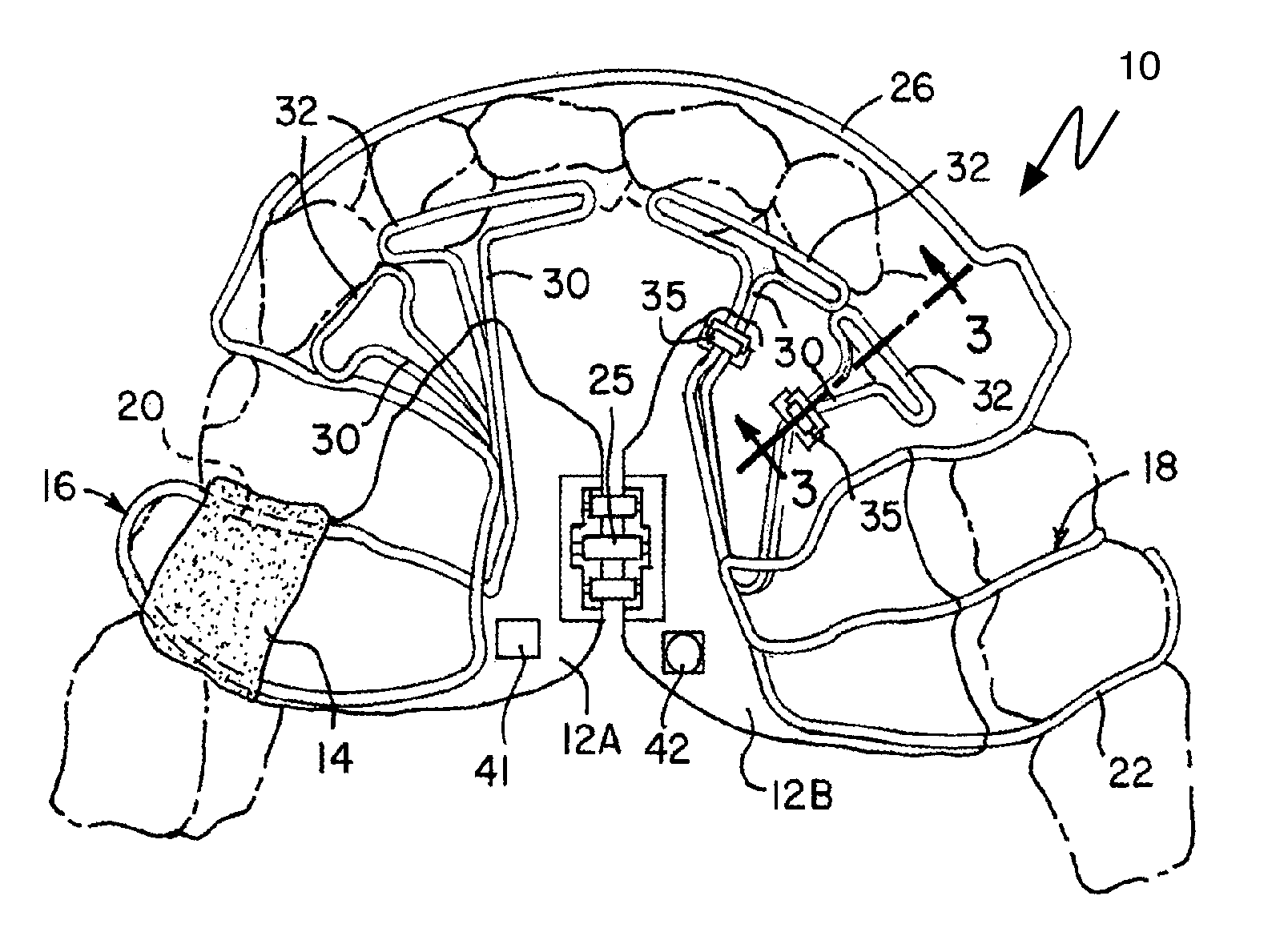System and method to bioengineer facial form in adults
a facial form and bioengineering technology, applied in the field of nonsurgical methods, can solve the problems of insufficient room for the patient's full set of teeth, insufficient widening, and inability to erupt optimally in patients' teeth,
- Summary
- Abstract
- Description
- Claims
- Application Information
AI Technical Summary
Benefits of technology
Problems solved by technology
Method used
Image
Examples
Embodiment Construction
[0033]Referring to FIGS. 1-3, there is shown an orthodontic device or appliance 10 of the split palate type in accordance with the present invention. Device 10 includes a plate body 12, preferably of plastic material, such as acrylic. The plate body is preferably in two halves 12A, 12B, but it can be in one piece or in several pieces of unequal size. Plate body 12 has an overlay 14 extending from it to a position that would cover the top of a tooth. While it is shown with one such overlay 14 on the left side in FIG. 1, it should be understood that the overlay may be on the right side and / or the left side. The location of the overlay is based on a clinical determination by the dental health care provider as to which facial muscles should be stressed more to achieve the desired result in an optimal way or how much stress should be applied. Typically more stress is applied to the muscles on the side where the overlay is located. As a result the overlay should be on the side where the f...
PUM
 Login to View More
Login to View More Abstract
Description
Claims
Application Information
 Login to View More
Login to View More - R&D
- Intellectual Property
- Life Sciences
- Materials
- Tech Scout
- Unparalleled Data Quality
- Higher Quality Content
- 60% Fewer Hallucinations
Browse by: Latest US Patents, China's latest patents, Technical Efficacy Thesaurus, Application Domain, Technology Topic, Popular Technical Reports.
© 2025 PatSnap. All rights reserved.Legal|Privacy policy|Modern Slavery Act Transparency Statement|Sitemap|About US| Contact US: help@patsnap.com



